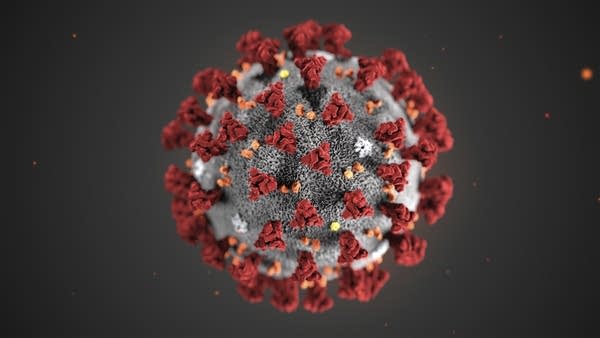Round 2: Dr. Hallberg answers your coronavirus questions

Go Deeper.
Create an account or log in to save stories.
Like this?
Thanks for liking this story! We have added it to a list of your favorite stories.
Dr. Jon Hallberg, medical director of the University of Minnesota Physicians Mill City Clinic, joined MPR News host Tom Crann again this week to answer some audience questions about COVID-19.
You can find last week’s questions and answers here.
I've had COVID-19 symptoms for five days. I was told by my doctor to self-quarantine and that I didn't qualify for testing and that no follow up was needed because I didn't have respiratory issues. How will our state know the impact and number of coronavirus cases without any tracking of people like me?
It's this conundrum that we're in. We have all these people who are symptomatic and we're basically not offering testing to them because they're too healthy. In addition, we also know that people can have COVID-19 infection and actually have no symptoms at all.
The only way that we’ll someday have a good sense of this will be antibody testing, you know, proof that we've been exposed to the virus. And it requires some very interesting mathematical statistical modeling to figure that out.
Turn Up Your Support
MPR News helps you turn down the noise and build shared understanding. Turn up your support for this public resource and keep trusted journalism accessible to all.
If it's transmitted by breathing in respiratory droplets, then why are we washing our hands so often?
Well, those droplets land on things and we're constantly using our hands to open doors and to turn things and grab things and pick up things. And if we then take those hands and rub our eyes, rub our nose, eat food, we're introducing those droplets into our respiratory tract.
Will leaving a face mask out in the sun's ultraviolet rays for three hours kill the virus? And if so, can hospitals or clinics reuse the masks?
Well, if you have your own cloth mask and you want to leave it outside with the hope that maybe some UVA exposure will kill the virus, that's fine. I'm not sure that we know that that really does the trick. But they are starting to take things like N95 masks in the hospitals, putting on special racks, exposing them to these special UV light towers, and that seems to be working.
Of course, there are a lot of studies underway. How much exposure do they need for how long? That's all being figured out. But, yes, they are starting to do this in the hospitals.
You've begun to see more patients who have gotten over COVID-19, and some had a pretty severe experience. What are you seeing and what do we need to know about how serious this disease can be?
I think people are really falling into one of three categories: people who may have been exposed and they don't have any symptoms; people who had symptoms and are told to shelter in place; and then there's a subset of people who get hospitalized. And even within that subset, there are those who end up in the intensive care units.
The stories that I'm now hearing from patients who've been in places like Florida, for example, at a conference that turned disastrous and who then spent eight days in a hospital there, it's really catastrophic and horrifying. And so I think for anyone who questions how severe this is, there's just no question in my mind.
I talk to my colleagues at the university who are in touch with their colleagues at the places like National Institutes of Health. And we all have friends and colleagues at work in Seattle or New York. The stories are real. The consequences are great. What we understand about this virus keeps expanding. And there's no question that we need to be taking this as seriously as we possibly can.


